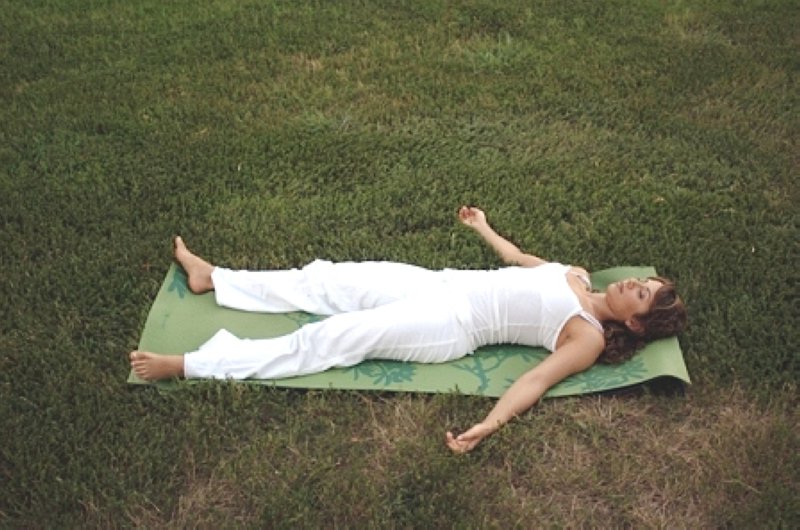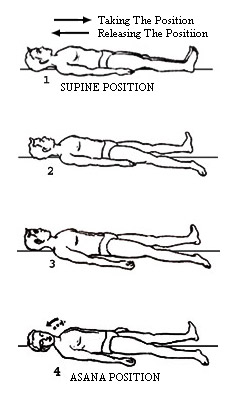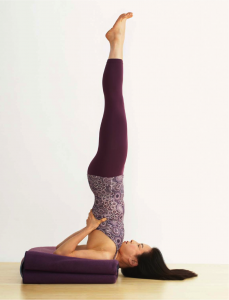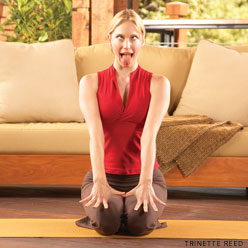Shavasana
Shava means dead body.


Steps
- Lie comfortably on the ground.
- Keep your legs spread apart at about one and half to two feet distance.
- Turn your feet outwards and keep them relaxed and at ease.
- Keep your arms about one foot distance away from the side of your body.
- Turn your attention to different parts of the body, starting from the lower extremity and gradually working upwards until you reach your head.
- While attending the parts, first of all, try to locate the presence of muscular tensions there.
- Now, relax the part by moving it gently, so that the perceived tensions are eased out.
Gently turn your attention to your belly and start observing its movement with each normal act of breathing. Do not control your breath in any manner. Let it be as natural as possible. Also do not concentrate on your breath, let the breathing be at its natural pace and rhythm.
At the end of this stage of shavasana, the number of thoughts that keep coming to your mind, will be substantially reduced in number as well as intensity. You will feel more peaceful, In this stage, you turn your attention to the thoughts instead of breath, as you did in the previous stage. Regardless of whether the thought is good or bad, worthwhile not worthwhile, welcome or unwelcome, keep observing each one of them, but do not give any personal reaction to any one of them.
Do not cling to a good thought or avoid and fight against a bad thought. Let all thoughts come, stay and go at their own natural pace. You just try to remain consciously but dispassionately aware of their entry, presence and exit from your mind. The moment you stop responding to your thoughts, they will quickly start getting settled and you will be able to experience what is called as “No Thought Awareness”. Having reached the state of No Thought Awareness, you will begin to develop taste for meditation and will start enjoying it more and more. Increasing joy in life will take away stress from your life.
Advantages
The stiffness of tissues and restlessness of mind can be easily removed by it. When Shavasana is performed after any other asana, blood reaches to the deeper tissues and nerves, and all impurities are washed off.
Shavasana also useful in condition like stress, mental depression etc











